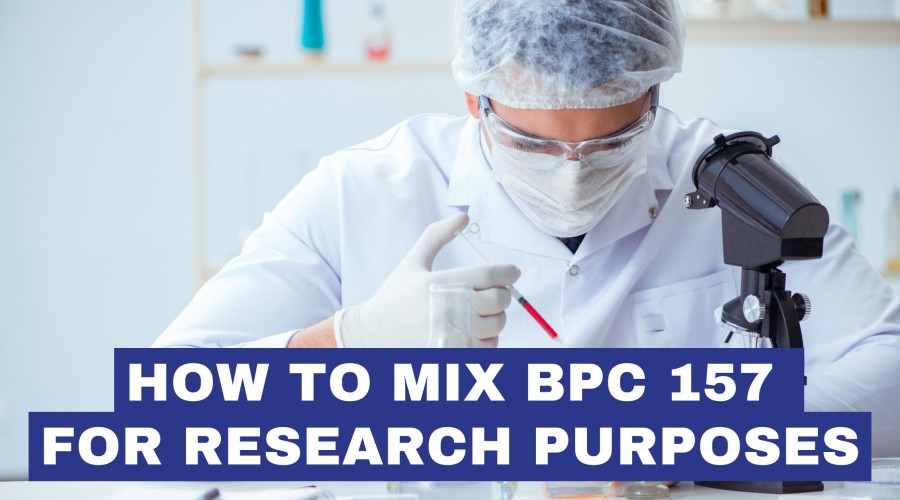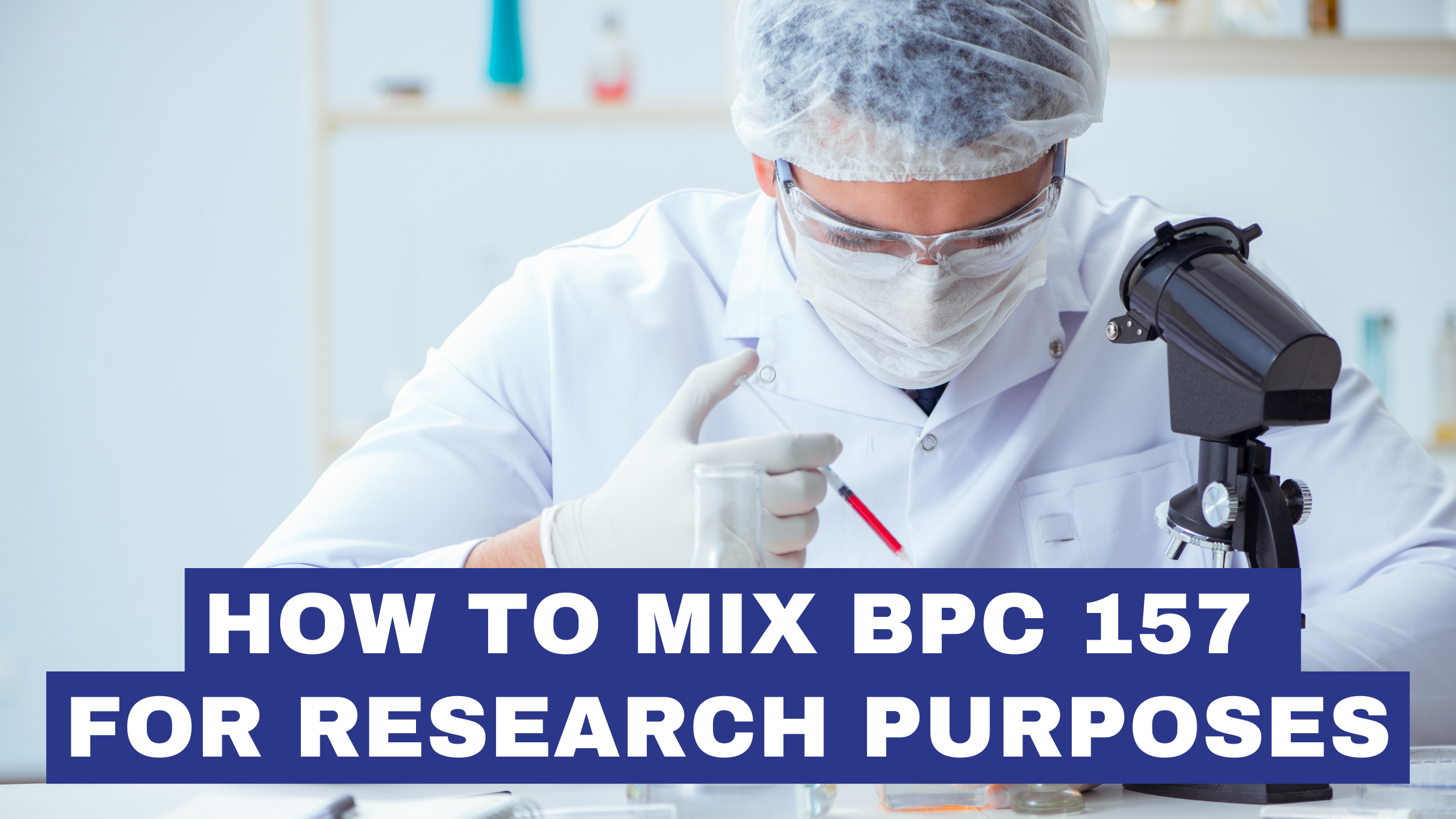
How to Properly Mix Peptide BPC 157 for Research Purposes

Peptides like BPC 157, a bioactive sequence of amino acids, have garnered significant interest in various studies due to their potential. BPC 157, arriving in a lyophilised form within sealed glass vials, requires precise handling and mixing to transform it into a solution suitable for research applications. Lyophilisation, or freeze-drying, is a process used to preserve the peptide, resulting in a solid puck of lyophilised powder that is reactivated through reconstitution. This guide aims to demystify the mixing process for BPC 157, ensuring researchers can prepare their peptides with accuracy and care, maintaining the integrity of their work.
Before diving into the mixing process, it's essential to grasp what lyophilised peptides entail. The lyophilisation process ensures the peptide's stability and longevity by removing water and sealing the compound in a vacuum. This form of preservation is why BPC 157 comes in a solid puck-like appearance. Correct reconstitution is key to preserving the peptide's bioactivity and ensuring it is accurately measured for research purposes.
BPC 157, a peptide of significant interest in the research community, often raises questions regarding the most effective reconstitution method. This guide provides a comprehensive, step-by-step approach to accurately mix your BPC 157 5mg peptide vial, ensuring precision and care.
Required Materials
Before we begin, ensure you have the following items on hand:
- BPC Peptide Vial
- Mixing Solution
- Alcohol Swabs
- 1ml Syringes (30g/29g recommended)
Note: 5mg equals 5000mcgs
Initial Preparations
Before starting the mixing process, it's essential to ensure a safe and clean working environment:
- Wash Hands Thoroughly: Start by washing your hands with soap and water to remove contaminants. Proper hand hygiene is essential to prevent impurities in the reconstitution process.
- Use Clinical Gloves: After washing your hands, wear clinical gloves to handle the materials. Gloves provide an additional layer of protection, preventing direct contact with the peptide and the mixing solution.
Preparation Steps
Allow the BPC157 to Reach Room Temperature
If you've stored the vial in a freezer or a medical fridge, ensure you let it thaw or warm up to room temperature before you proceed. This also applies to the mixing solution since using it cold can disrupt the process.
Opening the Vials
Use your thumb to carefully flip off the purple cap from the BPC157 vial and the blue cap from your mixing solution.
Equalising Pressure in the Peptide Vial
Due to the peptide naturally drying out when flushed with nitrogen, you may encounter a vacuum or pressure inside the vial. To equalise:
- Withdraw half a syringe of air.
- Clean the top of the BPC 157 vial with an alcohol swab.
- Insert the syringe into the vial. You may notice one of three responses:
- The syringe draws in air to equalise pressure.
- The syringe pushes out air.
- There was no change, indicating pressure was already equal.
This step prevents the mixing solution from spraying violently into the vial.
Mixing Procedure
Adding the Mixing Solution
For this example, we'll add 2ml of mixing solution to the BPC 157. Here's how:
- Withdraw 100 units (1ml) of mixing solution into the syringe after wiping the vial top again with an alcohol swab.
- Insert the syringe into the BPC157 vial, tilting it at a 45-degree angle to allow the solution to run down the vial wall. Repeat this to achieve 200 units in the vial.
Measuring Your Research Dose
Each 10 units (0.1ml) equates to 250mcgs. Thus, for a 500mcg research application, 20 units (0.2ml) should be withdrawn.
Post-Mixing Care
Storing the Reconstituted Peptide
It's essential to store the peptide in a fridge to maintain its optimal condition for research purposes.
Final Notes
This guide aims to provide a meticulous and straightforward method for reconstituting BPC 157, tailored to meet the research community's needs. By following these instructions, you ensure accurate preparation of your peptide, maintaining the integrity of your research.
By providing detailed, professional guidance, we aim to support researchers in their endeavours and facilitate advancements in peptide research. Remember, this guide is intended for informational purposes only, highlighting the technical process without endorsing or suggesting specific research applications.
Frequently Asked Questions (FAQ) on Mixing Peptide BPC 157
What is BPC 157, and why is it used in research?
BPC 157 is a synthetic peptide, also known as a pentadecapeptide. It is a sequence of amino acids that has garnered interest due to its potential healing and regenerative properties.
Why does BPC 157 come in a lyophilised form?
Lyophilisation, or freeze-drying, is a process that removes water from the peptide, allowing it to be preserved for longer periods. This method stabilises the peptide, preventing degradation and ensuring its bioactivity remains intact until it is reconstituted for use.
